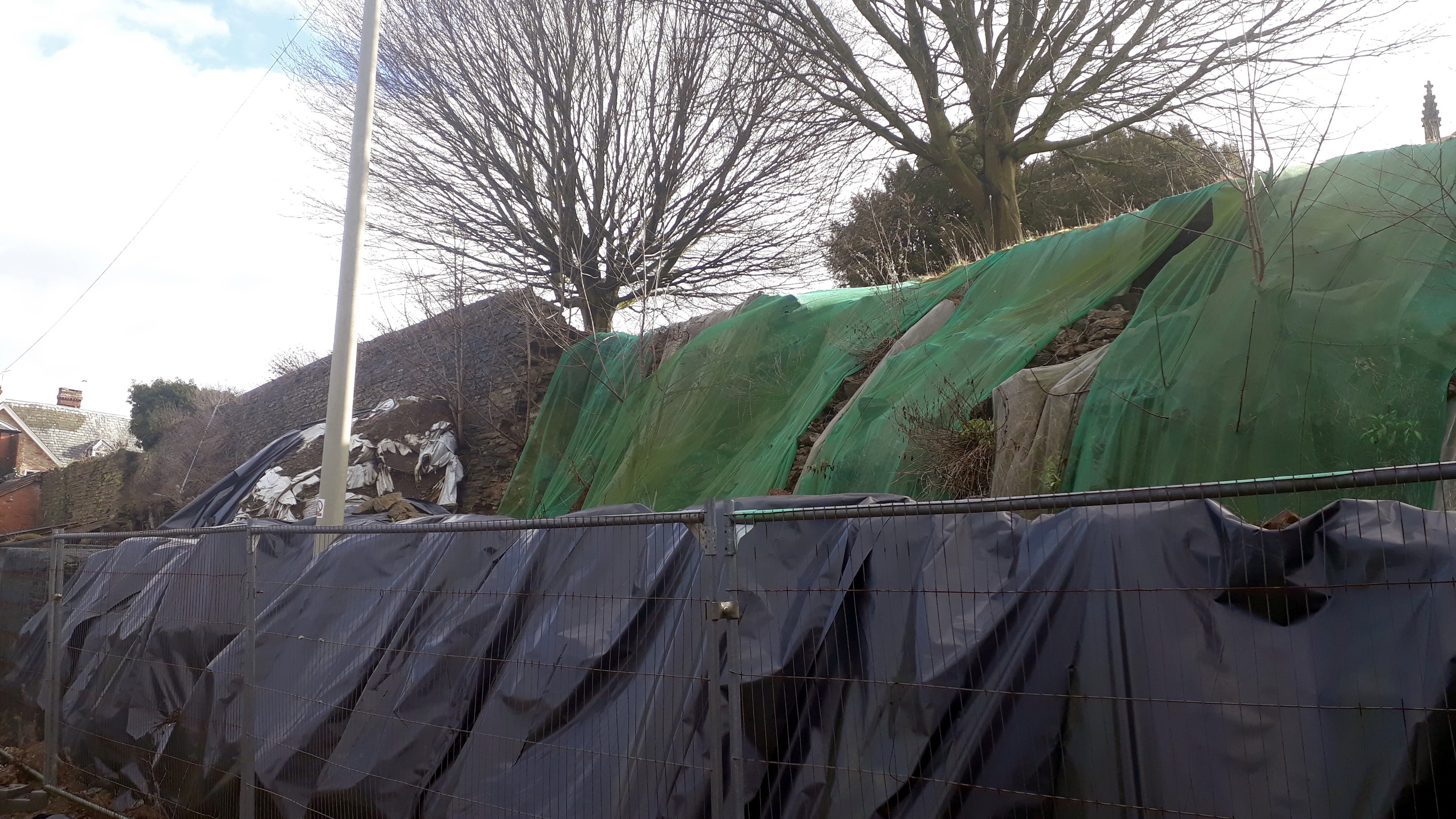Two years ago, I wrote about the delays in repairing the collapsed town wall behind St Laurence’s Church. This Monday, 18 February, is the sixth anniversary of the collapse. No repair work has been done. The churchyard behind the church remains an ugly mess that damages the setting of the Cathedral of the Marches. Saplings are growing out of the collapsed wall face weakening the historic monument further.
We have one of the most complete town walls in Europe. But neglect and overdue repairs have led Historic England to add Ludlow town walls to its Heritage in Danger list. The town council should be ashamed of this.
Ludlow Town Council is crawling alone at snail’s pace in arranging the long overdue repairs. I fear I may be still be writing about this on the tenth anniversary of the collapse in February 2023.
The winter of 2013 was unpleasant. Heavy rainfall was followed by a deep freeze. The ground behind the churchyard wall became saturated. Unfortunately, maintenance of the wall had been neglected for decades by the town council. It had been patched with cement not lime mortar. Lime mortar has been used for millennia. It takes a long time to set and will not set if the temperature is under 5C. The reason lime mortar was and still is used is that under stress, it flexes. Walls bonded with lime mortar bend and lean. For the most part they remain structurally stable. Cement is inflexible. All it can do is crack. This is what happened as the wet subsoil in the churchyard froze and expanded. The pressure caused the long neglected and badly repaired wall to collapse.
Way back in 2013, a year before I was elected as a councillor, I said: “It isn’t the case that old walls fall down. Its neglected old walls that fall down. This is one of the most serious examples of damage to an ancient monument in decades.”
Then we began the “big row”. At first Shropshire Council told us that a money was not an issue.
But within weeks, Shropshire Council announced it was not responsible for the repairs. It paid for shoring and Heras fencing and commissioned an archaeological survey. When the hurriedly-built buttress collapsed, it put a new one in place.
But the council was adamant that it was not responsible for any further costs. The Diocese of Hereford said the same. Lawyers backed the council and the church. After some very difficult meetings, and the passing of two-and-a-half years, Ludlow Town Council accepted responsibility for repairs. This town council should have known it was its job to repair the wall from day one but it had taken its eye off its responsibility many years before.
That was in October 2015. But the town council still did not prioritise repairs. It’s offices in the Guildhall, another important heritage asset, were fixed. The Buttercross was done up and opened as a museum. Both are very worthwhile projects. But the town wall wasn’t given any priority. It seems to have been out of sight and out of mind.
The town council has recently appointed The Morton Partnership – a renowned structural engineering company specialising in heritage – to investigate what work is required and draw up a management plan. It has taken out a loan to cover the £35,550 cost of the latest stage of the Morton study.
When the study is complete and Ludlow Town Council has debated it, the council will need to find the money to repair the wall. I can’t guess at the cost but it is hardly likely to be cheap. If a grant is needed from a body like Historic England or the Heritage Lottery Fund, it could be two years before funding is in place. Archaeological work might be needed. Listed Building Consent and Scheduled Monument Consent must be obtained for any work. Rebuilding could be completed over a single summer.
By then it will have been ten years since the wall fell. That reflects badly on our town and on the town council. The wall should have been repaired within three years at most. And it never should have been neglected in the first place. I can’t imagine such a lengthy delay happening in any other historic tourist town.






